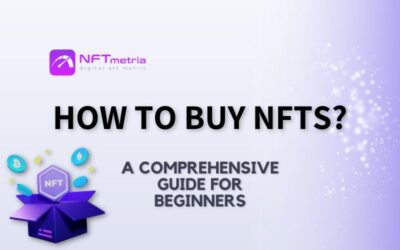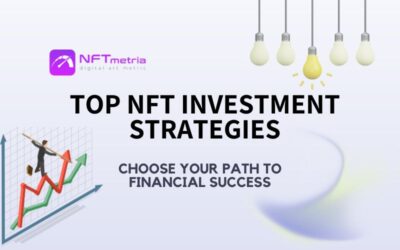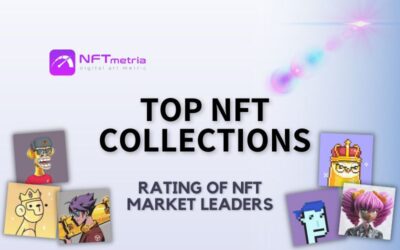In the realm of modern digital technologies and cryptocurrency innovations, NFTs have carved out a special place. These unique digital assets encompass one-of-a-kind artworks, collectibles, and media files recorded on the blockchain. For many newcomers, the world of NFTs might appear intricate and perplexing. However, the purchase of NFTs is accessible to almost anyone intrigued by this fascinating form of investment and collecting.
In this article, we will delve into the key steps necessary to buy NFTs. Whether you’re an artist, a collector, or just an enthusiast, our guide will help you navigate this thrilling world of digital unique assets. We will guide you on choosing the right platform, creating a cryptocurrency wallet, funding it, finding your desired NFT, and safely completing the purchase.
Are you ready to embark on your journey into the world of NFTs? Let’s explore each stage of this exciting process together.
Stages of NFT Purchase
The process of buying NFTs involves several crucial stages, essential to grasp, especially if you are a novice in the realm of cryptocurrencies and blockchain. Here is a detailed guide on the stages of purchasing NFTs:
- Choosing a Cryptocurrency Wallet
- Funding Your Cryptocurrency Wallet
- Selecting an NFT Platform
- Researching and Finding NFTs
- Participating in Auctions or Purchasing at a Fixed Price
- Buying and Transferring NFTs
- Verifying Ownership and Storage
Now, let’s break down each stage in detail with examples.
How to Choose and Create a Cryptocurrency Wallet for NFT Purchases?
Selecting and creating a cryptocurrency wallet is the first and crucial step in the world of NFTs. It serves as your entry ticket into the fascinating collection of unique digital assets. Let’s explore how to choose and create a cryptocurrency wallet for safe and convenient NFT purchases.
How to Choose a Cryptocurrency Wallet for NFTs?
- Types of Cryptocurrency Wallets:
- Hardware Wallets: Physical devices providing maximum security as they are offline.
- Software Wallets: Applications or web platforms, more convenient for everyday use.
- Mobile Wallets: Suitable for mobile devices, perfect for those who want to buy NFTs on the go.
- Security Measures:
- Private Keys: Ensure you have full control over your private keys, a key aspect of security.
- Strong Password: Use a complex password to access the wallet.
- Integration with NFT Marketplaces:
- Compatibility: Verify that the cryptocurrency wallet is compatible with the platforms where you plan to buy NFTs.
Examples of Cryptocurrency Wallets for NFTs:
- MetaMask:
- Type: Software wallet (available as a browser extension).
- Security: Provides private keys and supports multiple NFT platforms.
- Ledger Nano S:
- Type: Hardware wallet.
- Security: Physical device with additional layers of protection.
- Trust Wallet:
- Type: Mobile wallet (available for iOS and Android).
- Security: Allows storing private keys on the user’s device.
Choosing the right cryptocurrency wallet tailored to your needs and ensuring its security is paramount for a seamless NFT purchasing experience.
How to Create a Cryptocurrency Wallet for NFTs?
- Choose the Right Wallet Type: If you are a beginner, a software wallet such as MetaMask or Trust Wallet might be the optimal choice.
- Visit the Official Website of the Chosen Wallet: Follow the instructions to register your account.
- Create a Strong Password: Use a unique and complex password to secure your wallet.
- Save Backup and Private Keys: These data are crucial; they will help you regain access to your wallet if you forget your password.
- Verify Your Wallet Address: Before you start buying NFTs, ensure you know your unique wallet address.
By following these steps and selecting an appropriate cryptocurrency wallet, you’ll be ready to embark on your journey into the world of NFTs, purchasing and collecting unique digital assets.
How to Fund Your Cryptocurrency Wallet for NFT Purchases?
Funding your cryptocurrency wallet is a crucial step to embark on your NFT journey. Here’s how you can add funds to your wallet for purchasing unique digital assets:
- Choose a Reliable Exchange: Before you begin, select a trustworthy and secure cryptocurrency exchange such as Binance, Coinbase, or Kraken. Ensure the exchange supports the cryptocurrencies you intend to use for wallet funding.
- Register and Verify Your Account: Create an account on the chosen exchange. During registration, you may need to provide personal details for identity verification.
- Add a Payment Method: Link your bank card, digital wallet, or use a bank transfer to connect the exchange with your funding source.
- Select the Cryptocurrency for Funding: Choose the cryptocurrency (e.g., Ethereum, SOL, or MATIC) you want to purchase to fund your wallet.
- Initiate the Transaction: Specify the amount you wish to purchase and confirm the transaction. The exchange will process your payment and credit the cryptocurrency to your account.
Examples of Wallet Funding:
Example 1: Funding via Credit Card on Coinbase
- Select “Buy/Sell” on the Coinbase main page.
- Choose your Credit Card as the payment source.
- Specify the amount for purchasing cryptocurrency (e.g., Ethereum).
- Confirm the transaction and wait for the funds to reflect in your Coinbase account.
Example 2: Funding via PayPal on Binance
- Choose “Buy Crypto” on Binance and select PayPal as the payment method.
- Specify the amount and confirm the transaction.
- You will be redirected to the PayPal website where you must log in and confirm the payment.
- Once the payment is confirmed, the cryptocurrency will be credited to your Binance wallet.
By following these steps, you can easily and securely fund your cryptocurrency wallet and commence your investments in the world of NFTs.
How to Choose an NFT Platform for NFT Purchases?
Selecting the right platform for your first NFT purchase can be a pivotal moment in your journey into the world of digital assets. There are several crucial factors to consider when choosing an NFT platform for your initial purchase:
- Reputation and Reliability: Opt for platforms with a solid reputation and reliability. Popular platforms like OpenSea, Rarible, Foundation, or Blur are widely known and trusted by the community. Their long-term presence in the market indicates stability.
- Collections and Artists: Explore the collections and artists featured on the platform. Each platform has its unique artists and collections. Some platforms specialize in specific art forms or themes. Choose a platform where you can find works that genuinely interest you.
- Cost and Accessibility: Check the pricing of NFTs on the platform. Some platforms have higher fees or minimum entry prices. Consider your budget and select a platform where you feel comfortable financially.
- Auctions and Fixed Prices: Different platforms offer different methods of purchasing NFTs. Some allow participation in auctions where prices are determined by buyers’ bids, while others offer fixed prices. Choose a purchasing method that aligns with your preferences.
- Community and Support: Take note of the platform’s community activity. Platforms with active communities provide more opportunities for learning, interacting with artists, and connecting with fellow collectors.
- Interface and User-Friendliness: Evaluate the platform’s user interface. An intuitive and user-friendly interface enhances the purchasing process, making it more enjoyable and convenient.
- Supported Cryptocurrencies: Ensure the platform supports the cryptocurrencies you plan to use. Most platforms accept Ethereum (ETH), but some may also support other cryptocurrencies.
Choosing an NFT platform requires careful research and analysis. Gradually immerse yourself in the world of NFTs, explore various platforms, and select the one that aligns with your interests and investment goals in digital art assets.
Research and Discovery of NFTs
Researching and discovering NFTs is a crucial step to undertake before your first NFT purchase. This stage will help you make informed decisions and choose digital assets that align with your interests and investment goals. Here are some key steps for successful research and discovery of NFTs:
- Define Your Goals: First and foremost, determine your investment goals with NFTs. Whether you want to acquire digital artworks as collectibles, invest in popular artistic creations, or have specific collections in mind, a clear understanding of your objectives will help you narrow down your search for suitable NFTs.
- Explore Platforms: Research various NFT platforms where digital assets are showcased. Popular platforms include OpenSea, Rarible, Foundation, X2Y2, and many others. Each platform has its unique artists, collections, and rules. Decide on the platform you want to explore NFTs on and familiarize yourself with its features.
- Investigate Collections: Once you’ve chosen a platform, start exploring the available collections. Each NFT collection may represent specific themes, artistic styles, or types of assets. Choose collections that match your interests. Pay attention to popular and in-demand collections, as they might have potential for value appreciation.
- Explore Artists: If you’re interested in specific artists‘ works, delve into their creativity and background. Some artists are already recognizable names in the NFT and art world. Review their past works and assess their style and popularity.
- Market Analysis: Study the current state of the NFT market. Determine if there are any trends or popular themes influencing NFT prices. Stay updated with news and events in the NFT realm as they can impact asset values.
- Budget and Pricing: Set a budget for purchasing NFTs and decide on the price range you’re willing to pay for digital assets. Take potential fees and transaction costs associated with NFT platforms into account.
- Community and Opinions: Join NFT communities on platforms and social media. Engaging with experienced collectors and artists can provide valuable insights and recommendations.
- Evaluate Rarity and Uniqueness: When selecting NFTs, consider their rarity and uniqueness. These factors can significantly influence the future value of the asset.
Research and discovery of NFTs are vital stages that enable you to make informed choices when buying digital assets. Conduct thorough analyses, define your goals and preferences, and carefully explore the available options in the NFT market.
Purchasing NFTs
After successfully researching and selecting the desired NFTs, you are ready for the final stage – purchasing them. It’s crucial to pay attention to several key aspects to make this step as successful as possible.
- Choosing a Cryptocurrency Wallet: Before acquiring NFTs, ensure you have a reliable cryptocurrency wallet. This is vital for the security and storage of your digital assets. You can opt for an online wallet like MetaMask or Trust Wallet, or a hardware wallet such as Ledger or Trezor. The key is to follow best security practices.
- Preparing Cryptocurrency Funds: Make sure your cryptocurrency wallet has enough funds to complete the purchase. Depending on the chosen NFT and platform, you may require varying amounts of cryptocurrency to finalize the transaction.
- Making the Purchase on the Marketplace: Navigate to the marketplace where your chosen NFT is listed. You might need to create an account on this platform. Then, follow the instructions to buy the NFT. Typically, this involves selecting the NFT and confirming the transaction.
- Verifying Transaction Details: Before confirming the purchase, carefully review the transaction details. Ensure you are acquiring the specific NFT you are interested in and check the transaction conditions, including the price and transaction fee.
- Storage and Management: After completing the transaction, the NFT will be added to your cryptocurrency wallet. Note that some marketplaces provide built-in wallets, but for added security, it is recommended to use a separate cryptocurrency wallet. Now, your NFT will be stored in your digital collection, and you can manage it through your wallet.
- Proof of Ownership: NFTs operate on blockchain technology, ensuring transparency and reliability of ownership rights. Your NFTs will be securely recorded on the blockchain, allowing you to prove your rightful ownership.
Purchasing NFTs is the culminating act in your first experience with non-fungible tokens. By following these steps and applying the knowledge you’ve gained, you will enter the exciting world of digital assets and blockchain.
Conclusion
In conclusion, in this comprehensive guide to purchasing NFTs, it’s essential to emphasize that the world of digital collectible assets offers unique opportunities for newcomers in investments. However, to make successful and informed decisions, investing time and effort into researching the market and carefully analyzing available options is crucial.
Remember the importance of research. The deeper you delve into the world of NFTs, the more knowledge and experience you’ll gain. Follow trends, but also trust your instincts and analysis. The internet and NFT communities provide a rich source of information that can be used to make well-founded decisions.
Don’t forget to set a budget and keep track of your finances. Investing in NFTs can be exhilarating, but it also requires financial responsibility. Keep in mind that the NFT market can be highly volatile, and plan your moves considering this factor.
We hope this guide helps you embark on your journey in the world of NFTs successfully. Explore boldly, learn, and invest wisely. Best of luck in your future investment ventures in the realm of digital assets!











